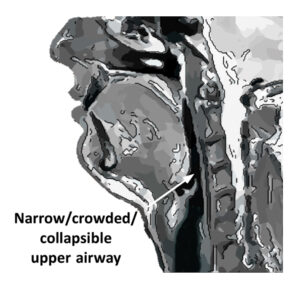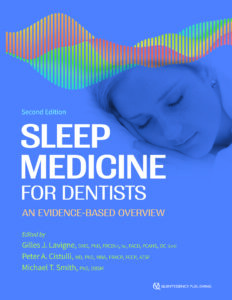Written by: Bryn Grisham

Which of the following options could you discuss with patients as possible treatments for obstructive sleep apnea (OSA)?
a. Sleep position trainers
b. Mandibular advancement devices (MADs)
c. CPAP (continuous positive airway pressure) machines
d. Didgeridoo lessons
The correct answer is all of them, and yes, that really does include didgeridoo lessons, or more accurately, circular breathing exercises.
Researchers have known for a while that practicing circular breathing can make a real difference for patients with OSA, and some of the early research is fascinating. When a study from 2006 had patients with moderate OSA undertake didgeridoo lessons, researchers discovered significant improvement in their Apnea-Hypopnea Index (AHI) after 4 months.

Another study from 2008 looked into the risk of OSA specifically for musicians who played with orchestras. In that study, researchers found that only musicians who played a double reed instrument (ie, oboe, bassoon, English horn) demonstrated a much lower risk of OSA than any other type of orchestral musician, including other wind musicians. The likely difference for double reed musicians is in their skills with controlled, precise breath support necessary to force air through the double reeds, as well as circular breathing.
Oropharyngeal exercises are cost effective and often have better patient compliance than other treatments for OSA.
So circular breathing can really help patients with OSA. But what if you don’t think your patients want to take up the didgeridoo or the bassoon? Luckily, the same benefits can be had from regular oropharyngeal exercises, and that is very good news indeed. Not only are oropharyngeal exercises cost effective, but they often have better patient compliance than other treatments for OSA (most notably the dreaded CPAP). That alone could recommend the treatment for many patients. However, many studies over the last decade have shown outright that oropharyngeal exercises are effective at reducing AHI for patients with OSA.
Strengthening the tongue similarly engages and strengthens the muscles of the pharyngeal walls.
Although it is a little surprising at first, it does makes a lot of sense that circular breathing and oropharyngeal exercises could be used effectively to address sleep apnea. We think of circular breathing as a type of breath work, but in actuality it is a complex series of movements in which the tongue is moved forward to force air in the cheeks through the instrument, and during inhalation, the soft palate is moved away from the posterior pharyngeal wall. Likewise, oropharyngeal exercises that address sleep apnea also focus on the tongue and soft palate. You may wonder how these exercises could affect the upper airway, but researchers have found that strengthening the tongue similarly engages and strengthens the muscles of the pharyngeal walls, and that is where the magic happens. Given that sleep apnea involves the collapse of the pharyngeal dilator muscles, why wouldn’t exercises that strengthen these muscles naturally increase their tonicity and endurance, even during sleep? It just makes sense.

I started learning more about the correlation between circular breathing and reduced risk of sleep apnea from reading Sleep Medicine for Dentists: An Evidence-Based Overview, Second Edition. If you are interested in sleep medicine in dentistry and are looking for a way to survey the most important research over the last decade, you should pick it up. The first edition was a bestseller that went out of print too soon, and we have been waiting for a long time for this new edition to arrive. So much has changed in sleep medicine over the last decade, and this new edition is full of interesting and compelling research that will change the way you think about sleep-disordered breathing and its treatment.
 Sleep Medicine for Dentists: An Evidence-Based Overview, Second Edition
Sleep Medicine for Dentists: An Evidence-Based Overview, Second Edition
Edited by Gilles J. Lavigne, Peter A. Cistulli, and Michael T. Smith
Dentists are often the first medical practitioners to encounter patient reports or clinical evidence of disorders such as sleep apnea, sleep bruxism, and sleep-disrupting orofacial pain, providing them a unique opportunity to prevent the development or persistence of conditions that strongly impact their patients’ lives. Since the first publication of this seminal book, significant and exciting advances have been made in the field of sleep medicine, and this updated edition gathers all of this new evidence-based knowledge and presents it in focused, concise chapters. Leading experts in medicine and dentistry explain the neurobiologic mechanisms of sleep and how they can be affected by breathing disorders, bruxism, and pain, along the way guiding dental practitioners in performing their specific responsibilities for screening, treating, and often referring patients as part of a multidisciplinary team of physicians. Readers will find this book both fascinating and clinically important as they strive to provide the best possible treatment to patients with these complex and often life-threatening disorders.
224 pp; 40 illus; © 2020; ISBN 978-0-86715-828-1 (B8281); US $78
Contents
Introduction to Dental Sleep Medicine
Sleep Breathing Disorders
Sleep Bruxism: From Oral Behavior to Disorder
Sleep and Orofacial Pain
